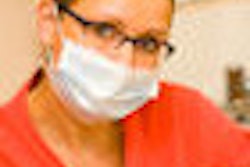
The Minnesota midlevel dental practitioner debate heated up again this week as the state's dental association launched an advertising campaign targeting proposed legislation that is headed for a vote in the state senate.
“We need reform, and this is reform.”
— Sen. Ann Lynch (DFL-Rochester)
That legislation would allow for the creation of midlevel dental providers to work in underserved communities across Minnesota. Faced with an oral healthcare crisis among certain populations, the state Legislature last year directed a 13-member work group of dentists and hygienists to draft a proposal defining guidelines for their education, scope of practice, and level of supervision. The issue has been widely debated ever since.
Now the Minnesota Dental Association (MDA) has stepped in with an ad campaign that is likely to further stir the pot. The newspaper ads feature a patient under treatment and state in bold print: "The last thing you want to hear when you're getting dental care is 'uh-oh.' "
It goes on to warn patients that state lawmakers are considering a new kind of dental worker who will be able to perform surgeries on them without training at an accredited dental school and without the supervision of a dentist. It then urges people to call their local legislator and tell them this is a "bad idea."
The radio ads issue similar warnings.
The statewide print, radio, and Web campaign has no definitive running time and can continue until its objective is met, an MDA representative told DrBicuspid.com.
The senate bill, sponsored by Sen. Ann Lynch (DFL-Rochester), proposes the creation of two types of midlevel providers: oral health practitioner (OHP) and dental therapist. The dental therapist would graduate from a dental therapy education program in a dental school or dental college, while the OHP would be required to have a bachelor's or master's degree from an oral health practitioner education program.
While the dental therapist would work under the direct supervision of a dentist, the OHP would be allowed to work without a supervising dentist being onsite. The scope of the OHP's practice could include preventive, primary diagnostic, educational, palliative, therapeutic, and restorative services, while the therapist would perform preventive, evaluative, and educational services.
The MDA supports the concept of the dental therapist but has objections to the OHP model.
"It is important for the dentists of Minnesota to support the midlevel provider, but they [OHPs] should work with an onsite dentist," said Jamie Sledd, D.D.S., immediate past president of the MDA.
While oral health practitioners can learn the mechanics of procedures such as extractions and restorations, they won't have the expertise to make a diagnosis or handle complications, she said.
The MDA's stance is that a dentist needs to be in the building to answer questions, make treatment decisions, or step in if something goes wrong. In addition, if the midlevel providers are going to do irreversible procedures, they should learn them from an accredited dental school, Dr. Sledd said.
"My concern is that the citizens of Minnesota should have safe care," she said. "There should not be two different standards of care."
And that is one of the main motivations behind launching the campaign.
"There have been many talks with legislators over the past months, and it is now time to reach the broader public," Dr. Sledd said. "People need to go to their legislators and voice their concerns."
Sen. Lynch called the campaign misleading and said the MDA is using "fear tactics" and "inaccurate information." She also emphasized that the dental therapist and OHP models are not competing proposals and that her bill incorporates them both.
"There is no silver bullet that will solve our problems," she said. "I don't oppose the therapist model, but it does not address the access to care issue; the OHP model hits the access to care issue head-on."
As for the education concerns raised by the MDA, Sen. Lynch explained that the OHP will train at a program that will be the first of its kind in the nation.
"This is a new and innovative program," she said. "In my bill, the education needs of the OHP are actually more than what is required of them in other countries."
She explained that similar midlevel dental practitioner models exist in 50 countries, and there is no evidence that it is an unsafe practice.
She cited a study (Journal of the American Dental Association, November 2008, Vol. 139:11, pp.1530-1535) that looked at dental health aide therapists (DHATs) in Alaska who provide certain dental services including irreversible dental procedures without an onsite dentist.
"No significant evidence was found to indicate that irreversible dental treatment provided by DHATs differs from similar treatment provided by dentists," the study concluded.
The OHP model does not put patient safety or the integrity of the dental profession at risk, Sen. Lynch said.
"We need reform, and this is reform," she concluded.
Copyright © 2009 DrBicuspid.com



















